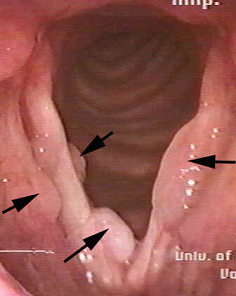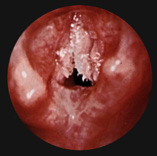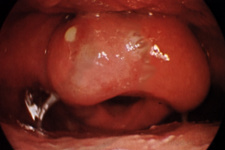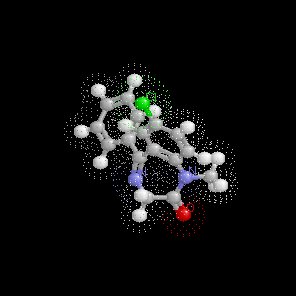Medical Pharmacology Chapter 12: Anxiolytics and Sedative-Hypnotics
|
|
|
Preoperative Medication: Sedative Hypnotics and Other Agents and Issues
-
Overview:
-
Most commonly used sedative/anxiolytic
-
Anxiolytic effectiveness is observed at dosages which do not result in cardiopulmonary depression or excessive sedation
-
Certain benzodiazepines also exhibit significant anterograde amnesia (amnesia subsequent to drug administration).
-
Examples of these benzodiazepines include midazolam (Versed) and lorazepam (Ativan).
-
These agents may also cause, on predictably, some degree of retrograde amnesia as well.
-
-
Benzodiazepines may also be used the night before schedule surgery in management of pre-surgical insomnia-- examples include lorazepam (Ativan), temazepam (Restoril), and triazolam (Halcion)
-
Sometimes benzodiazepines used pre-surgically can result in prolonged and excessive sedation.
-
Patients receiving lorazepam (Ativan) at high dosages (total dose > 4 mg orally at 5 ug/kg) may be most susceptible to this excessive sedation.
-
A benzodiazepine antagonist, flumazenil (Romazicon) may be used to reverse benzodiazepine effects.
-
-
Intramuscular injection of diazepam (Valium) may be painful because diazepam (Valium) is dissolved in the irritating solvent propylene glycol; intramuscular injections of midazolam (Versed) does not cause local irritation since the chemical characteristics of midazolam (Versed) do not require the use of propylene glycol as a solvent (an aqueous solvent is used).
-
-
 Adverse Effects: benzodiazepines
Adverse Effects: benzodiazepines-
Major adverse effects
-
Respiratory depression
-
Reduction in cognitive and motor function
-
-
Inpatient considerations:
-
If cognitive function need not be immediately returned to normal following procedure, lorazepam (Ativan) (oral) may be appropriate the morning of surgery
-
-
Outpatient considerations:
-
Diazepam (Valium) (oral)
-
Midazolam (Versed) (IV), particularly appropriate
-
-
Factors/conditions which increase likelihood of preoperative excessive sedation associated with the use of benzodiazepines and other sedative hypnotics:
-
Infancy, advanced age (elderly patients), chronic debilitating disease or malnutrition, pregnancy, renal dysfunction, hepatic dysfunction, pulmonary dysfunction, adrenal insufficiency, myasthenia gravis, myotonia, sickle cell disease, acute drug/ethanol intoxication5.
-
-
|
Midazolam (Versed) |
Diazepam (Valium) |
Lorazepam (Ativan) |
|
|
Dosage (oral) |
0.3-0.5 mg/kg |
0.15-0.2 mg/kg |
0.015-0.03 mg/kg |
|
Time to peak effect |
30 minutes-60 minutes |
1-1.5 hours |
2-4 hours |
|
Duration |
1-2 hours |
2-2.5 hours |
4-6 hours |
|
Elimination halftime (time to reduce drug concentration by 50%) |
1-4 hours |
20-100 hours (includes active metabolites) |
8-24 hours |
|
Apparent volume of distribution (Vd) |
1.1-1.7 L/kg |
0.7-1.7 L/kg |
0.8-1.3 L/kg |
|
Presence of active metabolites |
Yes, but relatively weak in effect |
Prominent |
None |
|
Metabolic mechanism |
Hydroxylation and conjugation |
Hydroxylation and conjugation |
Conjugation; conjugation reactions are less likely to be affected by age or the presence of hepatic disease |
|
Clearance |
6-11 ml/kg per minute |
0.2-0.5 ml/kg per minute |
0.7-1 ml/kg per minute |
|
Lipid solubility |
High |
High |
Intermediate |
|
Effect of age |
In the elderly, midazolam (Versed) half-life may be increased by as much as eight hours |
In the elderly the half-life of diazepam (Valium) may be increased by several days |
-
3Midazolam (Versed) and diazepam (Valium) comparisons:
-
Pharmacokinetic issues:
-
Midazolam (Versed): short half-life (1-4 hours); diazepam (Valium), including active metabolites: long half-life 20-100 hours
-
In elderly patients, diazepam (Valium) half-life may be extended to several days (midazolam (Versed) half-life may be extended by eight hours)
-
-
Diazepam (Valium) metabolites: oxazepam which is Serax and desmethyldiazepam are active
-
Weak midazolam (Versed) metabolites suggest that in the outpatient setting, midazolam (Versed) would be preferred.
-
Quicker recovery and greater amnesia have been found with midazolam (Versed).
-
-
Midazolam (Versed) in combination with opioids: cautious use in view of possible respiratory depression leading to inadequate oxygenation.
-
Nalbuphine (0.2 mg/kg) and midazolam (Versed) (0.09 mg/kg) may be the most appropriate combination in order to minimize respiratory complications at least in patients undergoing minor oral surgery
-
-
-
Pediatric uses of Midazolam (Versed)3:
-
Oral midazolam (Versed) (0.5 mg/kg) is useful in preventing "facemask phobia"
-
Following oral administration (midazolam (Versed), 0.5 mg/kg) the child is typically easily separated from parents and willing to accept monitoring and facemask
-
At a midazolam (Versed) dosage of 0.75 mg/kg, most pediatric patients {90%} undergo induction without crying or combative behavior
-
At these dosages, midazolam (Versed) effects last < 1 hour and do not appear to prolong recovery
-
Midazolam (Versed) administration (occasionally in combination with atropine, e.g.) can be facilitated by mixing with cherry syrup or with a melted popsicle.
-
Special circumstances:
-
In pediatric patients with congenital heart disease, midazolam (Versed) may improve oxyhemoglobin saturation in most cases; however in some children with cyanotic heart disease (3 of 17 tested) desaturation may occur with a reduction of greater than 10%
-
 Accordingly, pulse oximetry monitoring is essential.
Accordingly, pulse oximetry monitoring is essential.
-
-
-
Children with a compromised airway: midazolam (Versed) premedication would not be advised because apnea following midazolam (Versed) administration may be associated with an inability to mask ventilate.
-
Crying itself (which may be made less likely by midazolam (Versed) administration) can worsen airway obstruction in the presence of, for example, epiglottitis or laryngeal papillomatosis, a condition of multiple papilloma grows on the larynx caused by a viral infection-this condition occurs with approximately equal frequency and children and adults.
-
-
|
|
|
Papillomatosis
|
|
Epiglottis (with Abscess)
|
-
Intranasal midazolam (Versed) administration (0.2 mg/kg)
-
Less patient cooperation required (appropriate for combative children)
-
Quicker onset compared to oral Route of Administration
-
Occasionally (rare), midazolam (Versed) made evoked a hyperexcitability reaction-some anesthesia providers may wish to employ midazolam (Versed) only with relatively uncooperative patients
-
-
3Lorazepam (Ativan)
-
Overview
-
 No active metabolites; short half-life
(approximately 15 hours)
No active metabolites; short half-life
(approximately 15 hours) -
Half-life not influenced by patient age
-
-
Pharmacokinetic/metabolism characteristics
-
Reduced, compared to diazepam (Valium), rate of CNS access secondary to relatively less lipophilicity
-
Onset of action for both diazepam (Valium) and lorazepam (Ativan) is similar, about 30-60 minutes
-
CNS effects e.g. psychomotor impairment, may be observed for 12 hours following the single lorazepam (Ativan) dose
-
Metabolism:
-
Glucuronidation (conjugation) followed by renal excretion
-
Glucuronidation reactions tend to be less susceptible to effects of aging or hepatic disease, i.e. typically no significant change in half-life as a function of age or liver dysfunction
-
-
-
Comparing lorazepam (Ativan) and diazepam (Valium):
-
Dosage: 2 mg orally of lorazepam (Ativan) is about equal to 10 mg oral diazepam (Valium)
-
Sedation following a single 2 mg dose less about five hours
-
At higher dosages, such as 5 mg, anterograde amnestic effects may last up to about eight hours
-
Disorientation following the 5 mg dose may last as long as 17 hours; this finding suggests that the upper dosage limit for lorazepam (Ativan) perhaps should be 4 mg
-
Diazepam (Valium)
-
At the 10 mg level: typically no amnesia
-
At the 20 mg level, about 30% of patients exhibit amnesia {4 mg of lorazepam (Ativan) (oral) results in an amnesia frequency of > 70%}
-
-
-
 Lorazepam
(Ativan) uses:
Lorazepam
(Ativan) uses:
-
Appropriate for patients undergoing major surgical procedures which will be followed by intensive care unit monitoring
-
Advantage for seriously ill (critically ill) patients include:
-
Absence of myocardial depression or vascular smooth muscle relaxation even at doses above 9 mg
-
-
Concerning typical premedication in patients with heart disease, sedative and anxiolytic action of flurazepam (Dalmane) (orally administered; 0.06 mg/kg, administered 90 minutes prior surgery) was comparably effective to a more traditional premedication regimen consisting of intramuscular morphine (0.1 mg/kg) combined with scopolamine.
-
-
|
Diazepam (Valium) |
Midazolam (Versed) |
References
-
1Preoperative Medication in Basis of Anesthesia, 4th Edition, Stoelting, R.K. and Miller, R., p 119- 130, 2000)
-
Hobbs, W.R, Rall, T.W., and Verdoorn, T.A., Hypnotics and Sedatives; Ethanol In, Goodman and Gillman's The Pharmacologial Basis of Therapeutics,(Hardman, J.G, Limbird, L.E, Molinoff, P.B., Ruddon, R.W, and Gilman, A.G.,eds) TheMcGraw-Hill Companies, Inc., 1996, pp. 364-367.
-
3Sno E. White The Preoperative Visit and Premedication in Clinical Anesthesia Practice pp. 576-583 (Robert Kirby and Nikolaus Gravenstein, eds) W.B. Saunders Co., Philadelphia, 1994
-
4John R. Moyers and Carla M. Vincent Preoperative Medication in Clinical Anethesia, 4th edition (Paul G. Barash, Bruce. F. Cullen, Robert K. Stoelting, eds) Lippincott Williams and Wilkins, Philadelphia, PA, 2001
-
5Kathleen R. Rosen and David A. Rosen, "Preoperative Medication" pp. 61-70 in Principles and Procedures in Anesthesiology (Philip L. Liu, ed) J. B. Lipincott Company, Philadelphia, 1992




